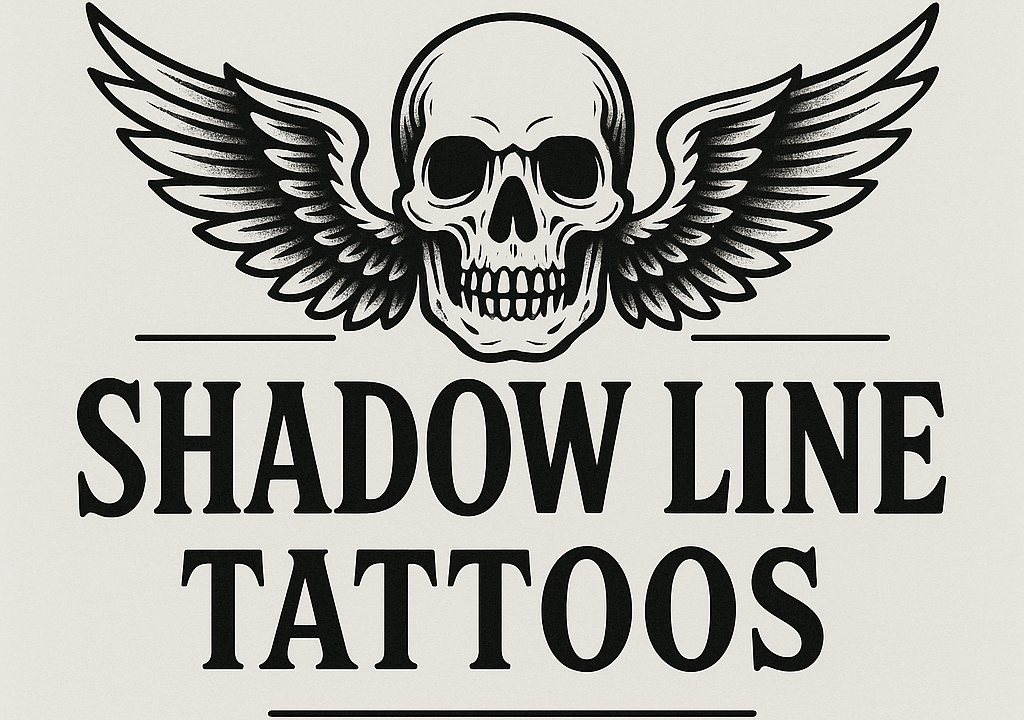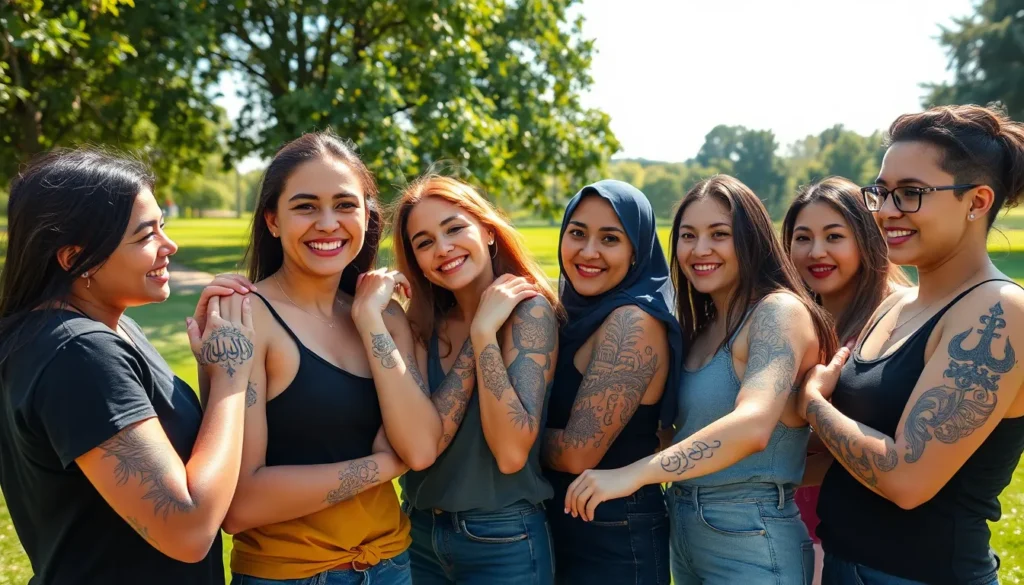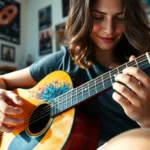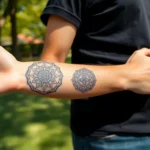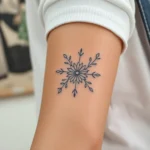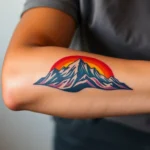Arabic calligraphy has captivated tattoo enthusiasts worldwide with its flowing elegance and profound spiritual meaning. We’ve witnessed a surge in demand for Arabic tattoo designs that blend ancient artistry with modern body art, creating stunning pieces that tell deeply personal stories.
The beauty of Arabic script lies in its versatility – whether you’re drawn to meaningful Quran verses, inspirational phrases, or names written in this graceful language, each design carries weight and significance. We’ve compiled the most striking Arabic tattoo ideas that’ll help you choose a design that resonates with your personal journey.
From delicate wrist inscriptions to bold shoulder pieces, Arabic tattoos offer endless possibilities for self-expression. We’ll guide you through popular phrases, proper translation techniques, and placement considerations to ensure your Arabic tattoo becomes a meaningful work of art you’ll cherish forever.
Traditional Arabic Calligraphy Tattoo Designs
Traditional Arabic calligraphy represents the foundation of beautiful tattoo artistry that honors centuries of Islamic artistic heritage. We’ve compiled the most sought-after classical scripts that transform meaningful words into stunning body art.
Classic Naskh Script Styles
Naskh script delivers exceptional readability and timeless elegance for Arabic tattoo enthusiasts seeking traditional aesthetics. We recommend this foundational style for first-time Arabic tattoo recipients because its clear letterforms ensure accurate translation and visual appeal.
Popular Naskh tattoo applications include:
- Religious verses from the Quran rendered in flowing horizontal lines
- Personal names crafted with balanced proportions and consistent spacing
- Meaningful phrases like “الحب الأبدي” (eternal love) displayed across forearms or ribcages
- Family mottos incorporating decorative dots and connecting strokes
Artists frequently choose Naskh for larger tattoo pieces because its uniform character height creates harmonious compositions. We’ve observed that shoulder blade and upper back placements showcase Naskh script beautifully due to the available canvas space.
Elegant Thuluth Script Options
Thuluth script commands attention through its dramatic vertical strokes and ornamental flourishes that create breathtaking tattoo masterpieces. We consider this calligraphic style the pinnacle of Arabic artistic expression for body art applications.
Distinctive Thuluth characteristics for tattoos:
- Elongated ascenders that create striking visual impact on vertical body areas
- Decorative loops and curves that flow naturally around body contours
- Bold proportions measuring one-third larger than standard scripts
- Ceremonial appearance perfect for commemorative or spiritual tattoos
Sacred phrases benefit tremendously from Thuluth’s majestic presentation style. We’ve documented many clients choosing this script for “بسم الله” (In the name of Allah) tattoos positioned prominently on chest or back areas where the ornate details receive proper visual emphasis.
Modern Diwani Script Variations
Diwani script offers contemporary tattoo enthusiasts intricate patterns and interconnected letterforms that create unique artistic statements. We appreciate how this Ottoman-era calligraphy style transforms simple words into complex visual puzzles that captivate viewers.
Contemporary Diwani tattoo trends feature:
- Interwoven letters forming circular or curved compositions
- Minimalist single-word designs with maximum decorative impact
- Layered text arrangements creating depth and mystery
- Abstract interpretations blending traditional rules with modern aesthetics
Curved body areas like shoulders, hips, and ankles complement Diwani’s natural flowing characteristics perfectly. We recommend shorter phrases or individual words when selecting Diwani script because excessive text can compromise the design’s signature interconnected beauty and overall legibility.
Meaningful Arabic Quote Tattoo Ideas
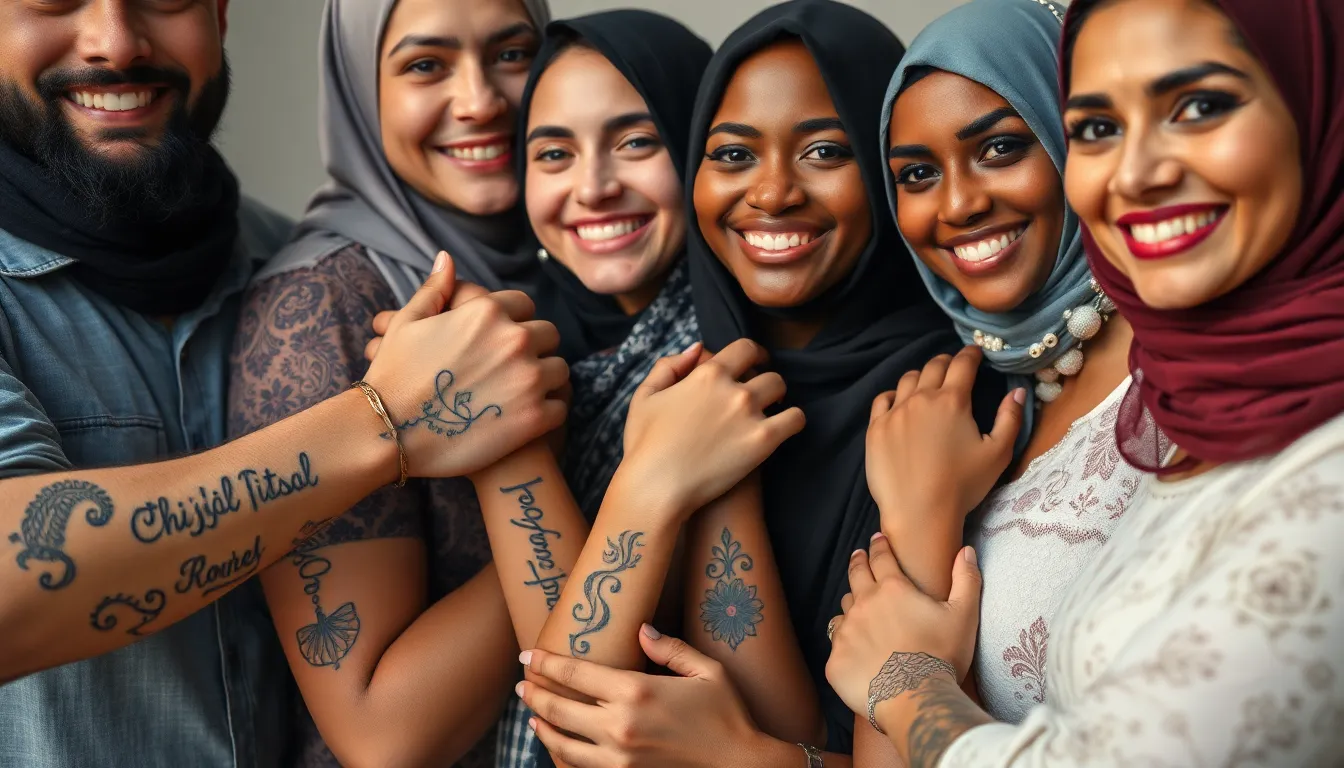
Meaningful Arabic quotes transform simple tattoos into powerful statements that reflect our deepest values and beliefs. These carefully chosen phrases allow us to carry wisdom and inspiration wherever we go.
Popular Quranic Verses and Religious Phrases
“It is written” (Maktub) represents one of the most requested Arabic tattoo phrases for its profound spiritual meaning. This simple yet powerful expression reflects the Islamic belief that life’s path is predetermined by divine will.
“Faith” (Iman) serves as a constant reminder of spiritual strength and unwavering belief. We often see this word chosen by individuals seeking to display their religious devotion through body art.
Religious phrases in Arabic calligraphy offer timeless wisdom that transcends cultural boundaries. These sacred expressions provide comfort during difficult times and celebration during moments of joy.
Inspirational Arabic Proverbs and Sayings
“Without pain we would not know joy” (Min dun ‘alam lan naerif alsaeada) captures life’s essential balance between struggle and happiness. This profound saying reminds us that hardships shape our appreciation for better times.
“I Suffered, I Learned, I Changed” reflects the groundbreaking power of life experiences. Personal growth becomes visible through this meaningful Arabic phrase that celebrates resilience and adaptation.
“Patience” (Sabr) emphasizes the virtue of perseverance through challenging circumstances. We recommend this single word for those seeking a minimalist yet deeply meaningful tattoo design.
“Resistance” (Muqawama) symbolizes inner strength and the courage to stand firm against life’s obstacles. This powerful word resonates with individuals who’ve overcome important challenges.
“But I forgive” demonstrates the strength found in letting go of past hurts. Forgiveness becomes a daily practice when this phrase serves as a permanent reminder on our skin.
Love and Family Quotes in Arabic
“Love yourself first” encourages the essential practice of self-acceptance before extending love to others. This contemporary wisdom speaks to modern relationships and personal development.
“My sister” (Ukhti) celebrates the unbreakable bond between siblings through elegant Arabic script. Family connections gain deeper meaning when expressed in this beautiful language.
“Mother” and “Father” (Umm and Abu) honor parental love and sacrifice in their most basic yet profound forms. These simple words carry generations of respect and gratitude.
“Heroine/Lioness” (Sayyida/Asadah) empowers women through strong Arabic terminology that celebrates feminine courage and leadership. These terms particularly appeal to women seeking to express their inner strength through meaningful body art.
Single Arabic Word Tattoo Concepts
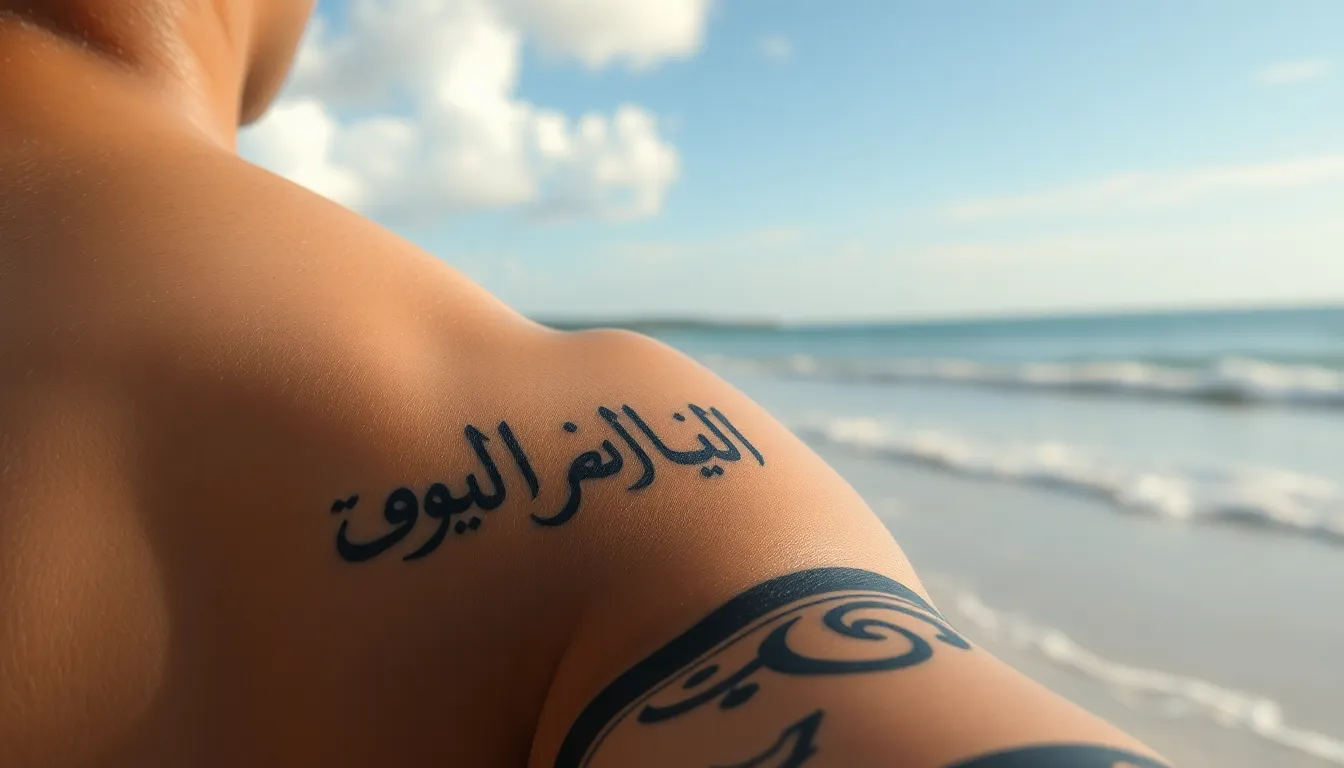
Single Arabic words offer powerful simplicity for tattoo enthusiasts seeking meaningful body art. We’ll explore three essential categories of Arabic words that translate beautifully into striking tattoo designs.
Names and Personal Titles
Names create deeply personal connections in Arabic tattoo art. We recommend أب (Abu) meaning “Father” and أم (Umm) meaning “Mother” as timeless choices honoring parental bonds. أخ (Akh) for “Brother” and أخت (Ukht) for “Sister” celebrate sibling relationships with elegant simplicity.
Personal empowerment shines through titles like لبؤة (Labu’ah) meaning “Lioness” and مقاتل (Muqatel) for “Fighter.” These powerful descriptors resonate particularly well with individuals expressing inner strength. لبؤة (Labu’ah) also translates to “Heroine,” making it a versatile choice for women seeking empowering Arabic tattoos.
Virtue and Character Words
Character-driven Arabic words embody spiritual and moral values beautifully. صبر (Sabr) meaning “Patience” represents one of Islam’s most cherished virtues, perfect for those embracing life’s challenges with grace. إيمان (Iman) translates to “Faith,” offering a profound spiritual statement that resonates across cultures.
إحسان (Ihsan) captures the concept of “Perfection” or “Goodness,” representing excellence in worship and character. تقوى (Taqwa) means “Piety” and reflects deep spiritual consciousness, making it ideal for religious individuals. قدر (Qadar) expresses “Fate” or “Destiny,” acknowledging life’s predetermined path with acceptance.
فردوس (Firdaws) meaning “Paradise” and الحرية (Alhorriea) for “Freedom” complete this category with powerful spiritual and philosophical concepts.
Nature and Universe Terms
Natural elements provide poetic beauty in Arabic tattoo designs. النيل (Al-Nil) meaning “The Nile” symbolizes calmness and peace, connecting wearers to this life-giving river’s tranquil energy. Rivers represent flow and continuity, making this choice particularly meaningful for those seeking serenity.
الليل (Al-Layl) translates to “The Night,” evoking mystery and introspection through darkness’s contemplative beauty. Night symbolism appeals to individuals who find peace in quiet moments and lunar cycles. الشمس (Al-Shams) means “The Sun,” representing warmth, energy, and life-giving power that sustains our industry.
These celestial and geographical terms create stunning visual impact while carrying deep symbolic meaning rooted in Arabic poetry and culture.
Arabic Symbol and Geometric Tattoo Patterns
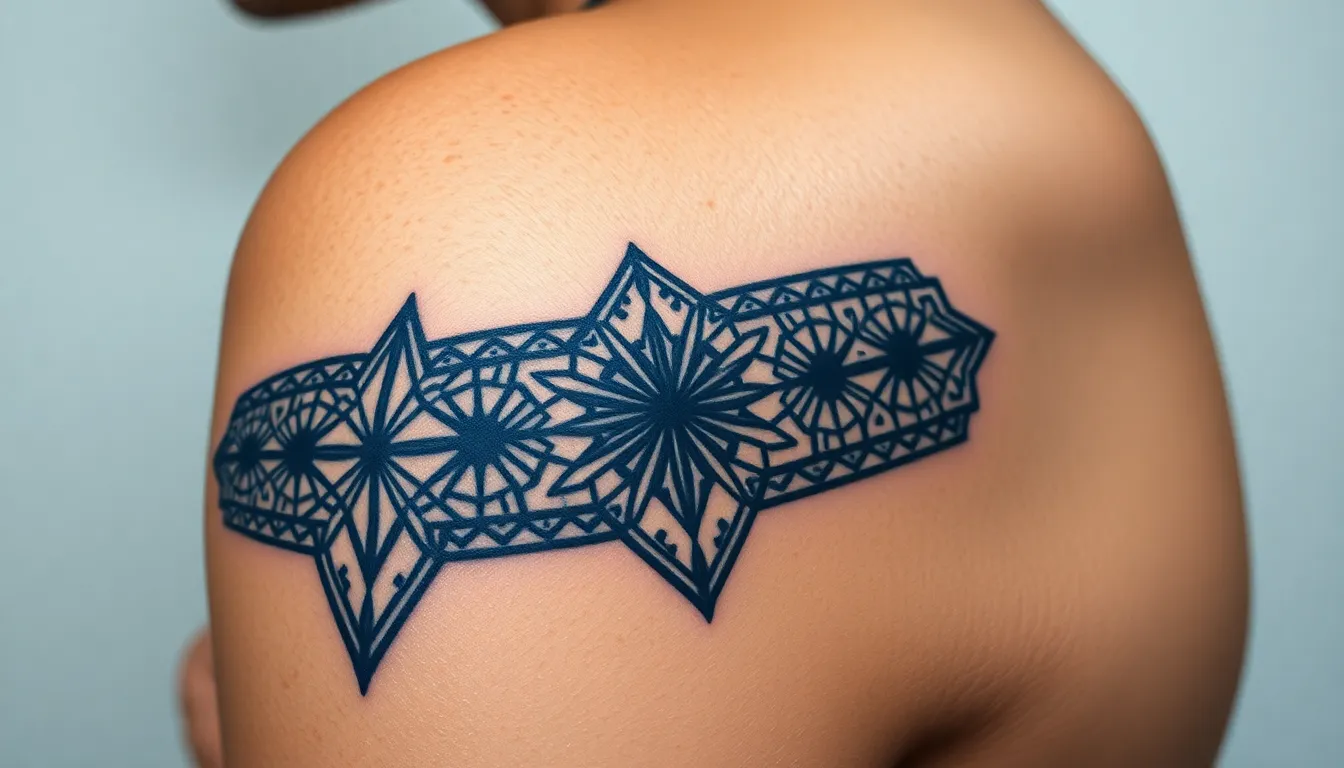
Arabic symbol and geometric tattoo patterns offer a sophisticated alternative to traditional calligraphy designs. These intricate motifs draw from centuries of Islamic artistic heritage while creating visually stunning body art.
Islamic Geometric Designs
Islamic geometric designs feature intricate patterns that hold deep symbolic meaning in Islamic art and architecture. These designs appear prominently in mosques and other sacred buildings throughout the Middle East and North Africa.
Sacred Pattern Elements include repetitive geometric shapes like triangles, circles, and squares that create complex compositions. Artists combine these basic forms to develop elaborate networks of interconnected patterns.
Spiritual Significance makes these designs particularly meaningful for tattoo enthusiasts seeking deeper connections to Islamic culture. Each pattern represents infinity and divine order through its endless repetition.
Popular Placement Options work best on larger body areas like the upper back, chest, or full sleeve applications. We recommend consulting with experienced tattoo artists who understand the mathematical precision required for authentic Islamic geometric patterns.
Arabic Numerals and Dates
Arabic numerals offer a unique cultural approach to commemorating important dates and meaningful numbers. These symbols add distinctive Middle Eastern flair to traditional numerical tattoos.
Commemorative Date Ideas include birth dates, wedding anniversaries, or other milestone moments using traditional Arabic numbering systems. Important life events gain deeper personal significance when expressed through Arabic numerical representation.
Cultural Authenticity comes from using proper Arabic numeral forms rather than Western interpretations. We suggest working with native Arabic speakers to ensure accurate numerical representation in your tattoo design.
Design Versatility allows Arabic numerals to work well as standalone pieces or integrated elements within larger Arabic tattoo compositions. Small Arabic date tattoos work beautifully on wrists, behind ears, or along the collarbone.
Traditional Arabesque Motifs
Traditional arabesque motifs combine flowing lines with repetitive patterns that create mesmerizing visual effects. These designs blend floral and geometric elements found throughout Arabic art and architecture.
Flowing Line Characteristics define arabesque patterns through their continuous, interconnected curves that seem to dance across the skin. Artists create these flowing movements by connecting plant inspired forms with geometric precision.
Decorative Applications work exceptionally well when combined with Arabic calligraphy styles like Kufic, Naskh, Thuluth, and Diwani scripts. We often see arabesque borders framing meaningful Arabic text or surrounding central design elements.
Contemporary Adaptations allow modern tattoo artists to interpret traditional arabesque motifs with personal touches while maintaining cultural authenticity. These patterns adapt beautifully to curved body areas like shoulders, ribs, or around the arm.
Placement Ideas for Arabic Tattoo Designs
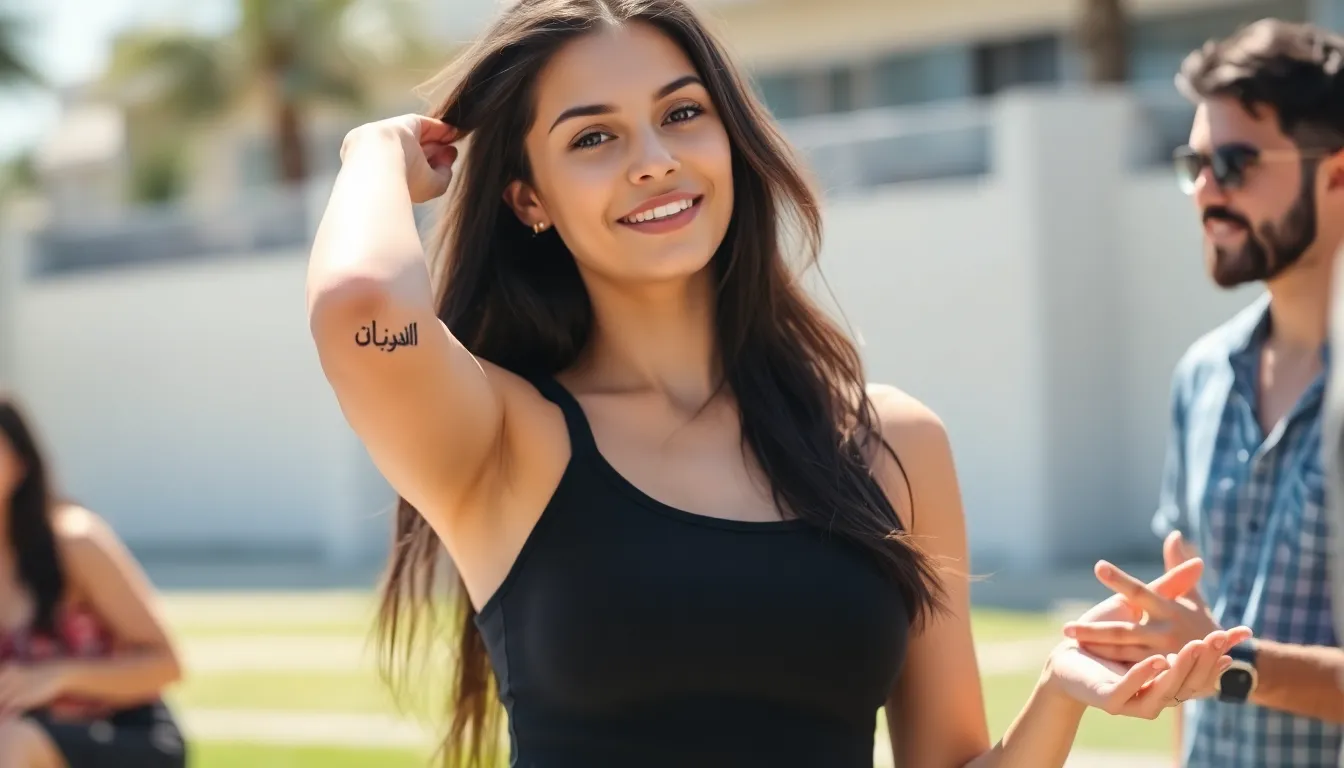
Choosing the right placement for your Arabic tattoo design significantly impacts its visual appeal and readability. Strategic positioning enhances the natural flow of Arabic script while accommodating various design sizes and styles.
Forearm and Wrist Placements
Forearm tattoos offer excellent visibility and accommodate medium-sized Arabic designs with remarkable clarity. We recommend this area for meaningful phrases like “Maktub” (It is written) or personal names in Naskh script, as the straight surface provides optimal readability. Vertical placement along the forearm works particularly well for longer quotes or verses, allowing the Arabic text to flow naturally with your arm’s movement.
Wrist positions suit delicate, smaller Arabic words or short phrases perfectly. Single words like “Sabr” (Patience) or “Iman” (Faith) create elegant statement pieces on the inner wrist. The curved nature of this area complements the flowing characteristics of Arabic calligraphy, especially when using fine line techniques that emphasize simplicity and grace.
Shoulder and Back Locations
Shoulder placements provide ample canvas space for intricate Arabic warrior tattoos and larger calligraphic designs. We find this area ideal for bold Thuluth script presentations, particularly for commemorative phrases or spiritual verses that benefit from dramatic visual impact. The rounded shoulder surface allows Arabic text to curve naturally, creating ever-changing compositions that move with your body.
Back locations offer the most expansive area for complex Arabic geometric patterns and extensive quotes. Upper back positioning works exceptionally well for Quranic verses or inspirational proverbs that require multiple lines of text. The flat, broad surface of the back accommodates traditional arabesque motifs alongside Arabic calligraphy, creating sophisticated mixed-media designs that honor Islamic artistic heritage.
Ribcage and Side Positions
Ribcage placements excel at showcasing longer Arabic quotes and meaningful phrases that need room to breathe. We recommend this area for inspirational sayings like “Min dun ‘alam lan naerif alsaeada” (Without pain we would not know joy), as the extended space allows proper letter spacing and maintains script authenticity. The natural curve of your ribcage enhances the flowing nature of Arabic calligraphy.
Side positions accommodate creative Arabic designs that incorporate both text and symbolic elements. This area works well for combining Arabic words with cultural symbols like butterflies or flowers, creating personalized compositions that tell your unique story. The vertical space along your side suits cascading Arabic phrases or stacked word arrangements that create visual rhythm and balance.
Arabic Tattoo Sizing and Style Considerations
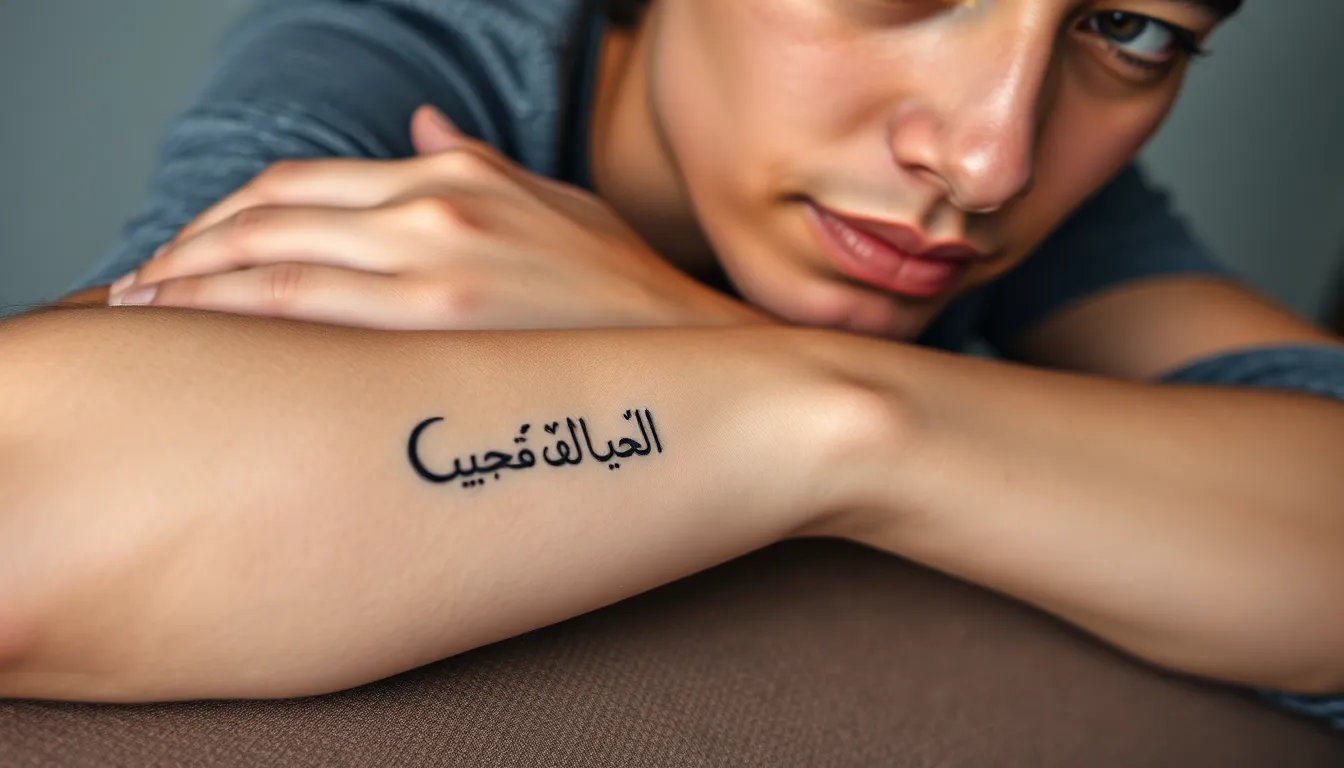
Size and style choices fundamentally shape how your Arabic tattoo communicates its intended message. We’ll explore design options that accommodate different aesthetic preferences and body placement requirements.
Small and Minimalist Arabic Designs
قدر (Fate/Destiny) creates an elegant minimalist choice that fits perfectly on wrists or behind ears. Delicate words like فردوس (Paradise) and مقاتل (Fighter) offer profound meaning in compact designs that won’t overwhelm smaller body areas.
Symbolic elements enhance these petite tattoos without compromising their simplicity. The Crescent Moon paired with short Arabic phrases creates visual balance while maintaining spiritual significance. Lotus Flower symbols complement single word tattoos by adding organic beauty to geometric Arabic letterforms.
Naskh script provides the ideal calligraphy style for small designs due to its refined elegance and excellent readability. Clean lines in this traditional script ensure your minimalist Arabic tattoo remains legible even at reduced sizes. The Eye symbol works particularly well with short protective phrases, creating meaningful combinations that fit discreetly on fingers or ankles.
Large Statement Piece Options
“وما النصر إلا صبر ساعة” (Victory is but an hour of patience) exemplifies the powerful impact achievable through larger Arabic tattoo designs. Extended verses and quotes demand more canvas space but deliver dramatic visual statements that command attention.
Kufic calligraphy transforms lengthy phrases into bold artistic expressions perfect for back pieces or chest placements. Angular letterforms in this ancient script create striking geometric patterns that enhance the overall composition. Complex designs incorporating multiple lines of Arabic text benefit from Kufic’s architectural qualities.
Verse tattoos spanning entire shoulder blades or ribcages allow complete Quranic passages or poetry to unfold across the body. These substantial pieces require careful planning to ensure proper proportions and readable flow from one line to the next.
Combining Arabic with Other Design Elements
Cultural symbol integration creates unique fusion pieces that honor multiple artistic traditions simultaneously. Geometric patterns from Islamic art blend seamlessly with Arabic calligraphy, producing cohesive designs that celebrate the script’s historical context.
Mixed script combinations offer contemporary approaches to multilingual expression. Arabic phrases paired with Latin translations create meaningful dialogue between languages while maintaining visual harmony. Cyrillic and Arabic combinations appeal to individuals with diverse cultural backgrounds seeking unified artistic representation.
Floral elements soften the angular nature of Arabic letterforms while adding feminine touches to traditional masculine scripts. Rose motifs intertwining with love quotes in Arabic create romantic compositions suitable for anniversary commemorations or relationship tributes.
Cultural Sensitivity and Accuracy Guidelines
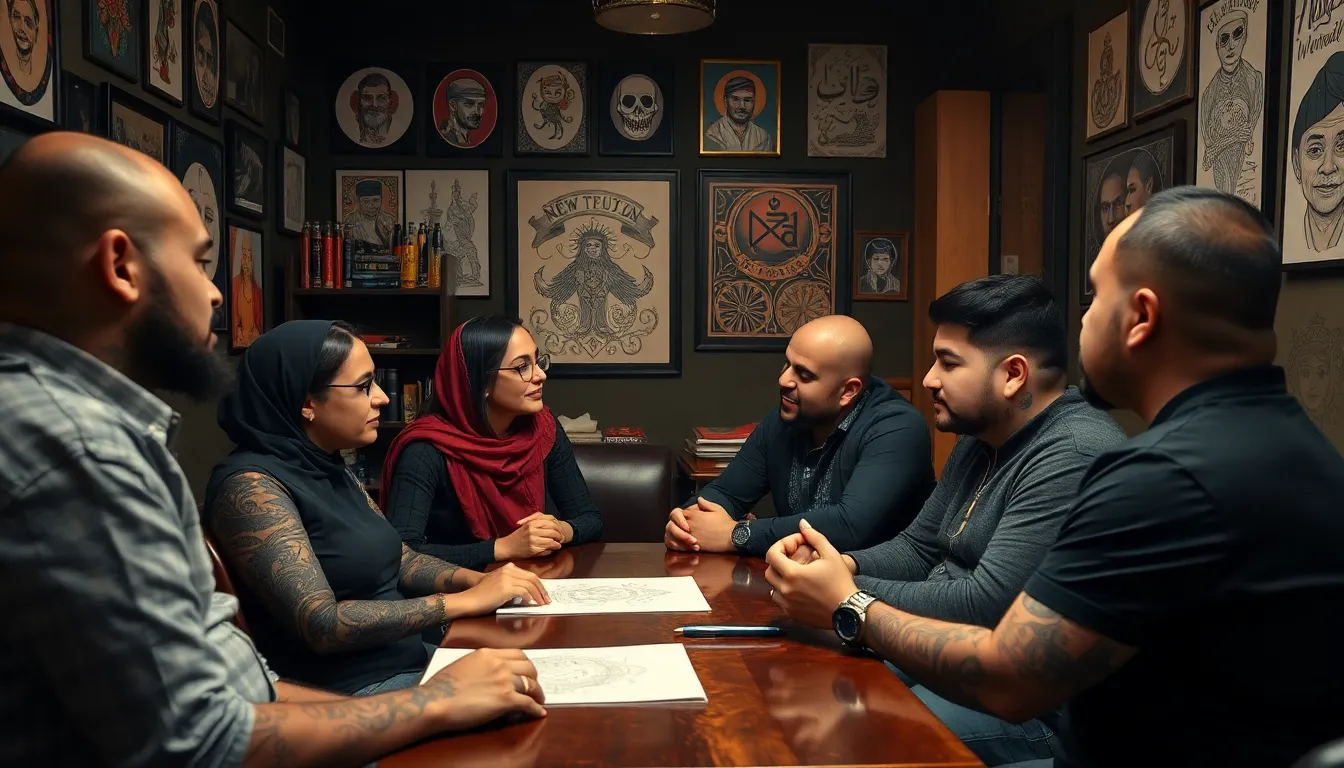
When choosing Arabic tattoo designs, we must approach this art form with respect and cultural awareness. These guidelines ensure our tattoos honor the rich heritage of Arabic language and Islamic traditions.
Working with Native Arabic Speakers
Native speakers provide essential expertise that prevents costly translation errors and cultural missteps. We strongly recommend consulting with Arabic linguists or native speakers before finalizing any tattoo design, as they understand the subtle nuances that automated translation tools often miss.
Professional translators can verify that your chosen phrase carries the intended meaning and cultural appropriateness. They’ll also ensure the script flows naturally, as Arabic letters connect differently depending on their position within words.
Many tattoo artists now partner with Arabic language experts to offer accurate consultation services. We suggest seeking tattoo studios that already have established relationships with native speakers rather than attempting to navigate translations independently.
Local universities with Arabic language departments often provide translation services or can connect you with qualified speakers. Community cultural centers also serve as valuable resources for finding native speakers willing to assist with translation verification.
Avoiding Translation Mistakes
Translation errors in Arabic tattoos can completely change the intended meaning or create nonsensical phrases. We’ve seen countless examples where online translation tools produced grammatically incorrect or culturally inappropriate results.
Arabic grammar follows complex rules that differ significantly from English sentence structure, making direct word-for-word translations particularly problematic. Verb conjugations, gender agreements, and contextual meanings require expert knowledge to execute correctly.
Double-checking translations through multiple sources helps identify potential errors before committing to permanent ink. We recommend verifying translations with at least two independent native speakers to ensure accuracy and appropriateness.
Popular translation mistakes include reversed letter connections, incorrect diacritical marks, and phrases that sound meaningful in English but lack coherence in Arabic. Professional verification eliminates these common pitfalls that can result in embarrassing or offensive tattoos.
Respecting Religious and Cultural Boundaries
Religious verses and sacred phrases require especially careful consideration, as Islamic tradition holds exact guidelines about displaying Quranic text on the body. We must understand that many Muslims consider tattooing religious verses inappropriate or disrespectful.
Sacred Arabic calligraphy traditionally appears in mosques, manuscripts, and decorative art rather than as permanent body modifications. Consulting with Islamic scholars or community leaders helps determine whether your chosen design respects religious boundaries.
Cultural symbols like the crescent moon and star, while associated with growth and inspiration, aren’t officially Islamic symbols but carry cultural significance that deserves respectful treatment. We should approach these elements with the same care given to explicitly religious imagery.
Bedouin tattoo traditions historically served identification and protection purposes, with exact placements on body parts signifying strength, engagement, or healing properties. Understanding these traditional contexts helps us avoid appropriating sacred or culturally exact designs without proper awareness of their origins.
Popular Arabic Tattoo Trends and Modern Adaptations
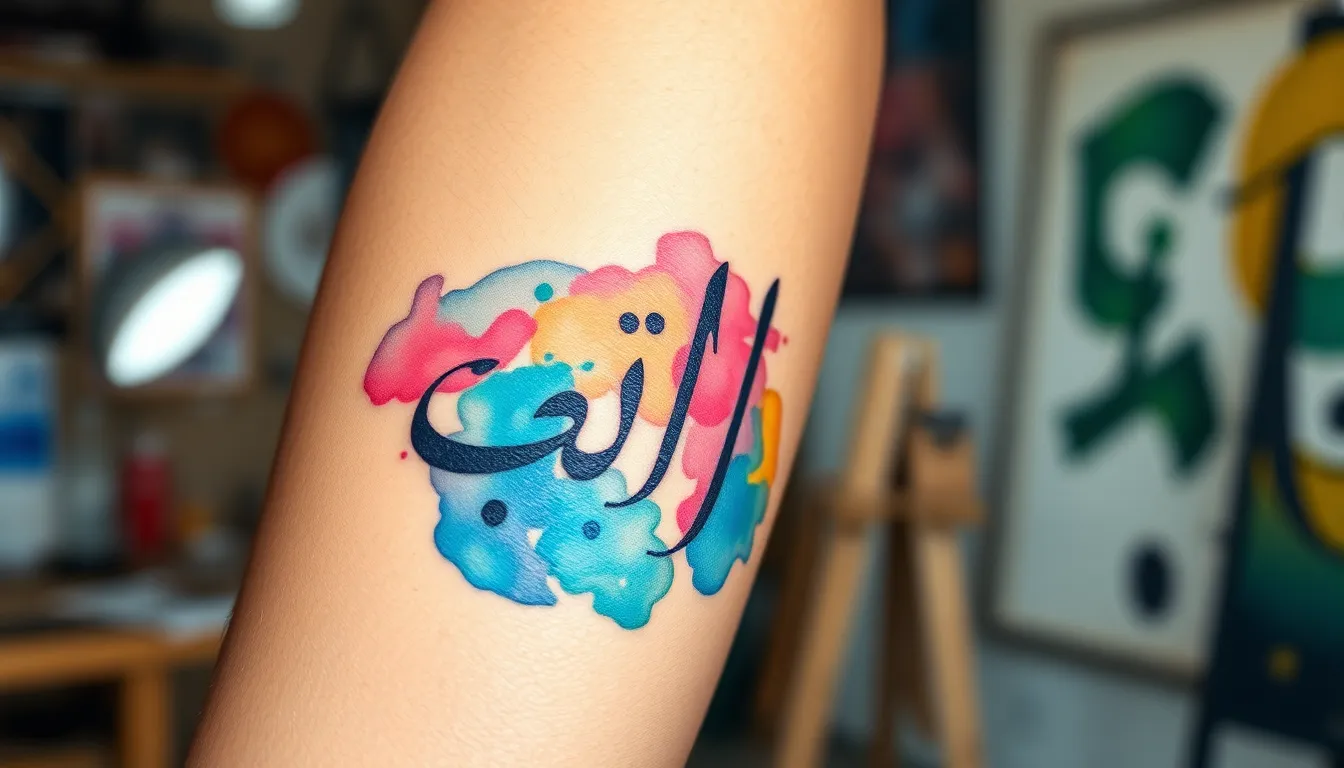
Arabic tattoo artistry continues evolving through innovative techniques that blend traditional calligraphy with contemporary artistic expressions. These modern approaches allow us to honor cultural heritage while embracing creative possibilities.
Watercolor Arabic Calligraphy Effects
Watercolor Arabic calligraphy creates stunning visual impact by combining traditional script with vibrant color techniques. Artists apply soft gradients and flowing paint effects around classic Arabic letterforms, transforming words like “Strength” (قوة) and “Love” (حب) into ever-changing artwork. The technique involves layering translucent colors that bleed and blend naturally, mimicking traditional watercolor painting methods.
We recommend this style for meaningful single words or short phrases where the color enhancement doesn’t overwhelm the script’s readability. Popular placements include the forearm and shoulder areas where the watercolor effects can spread naturally across curved surfaces. The technique works exceptionally well with Naskh and Thuluth scripts, as their clear letterforms provide strong foundations for the colorful overlays.
Contemporary Fusion Styles
Contemporary fusion designs blend traditional Arabic motifs with modern elements like abstract shapes, geometric patterns, and cultural crossovers. These innovative approaches allow personal expression while maintaining cultural authenticity through careful integration of Arabic calligraphy with contemporary design principles.
Popular fusion combinations include Arabic warrior tattoos that feature traditional armor elements alongside elegant script work, symbolizing both strength and cultural pride. Modern adaptations incorporate minimalist design principles, creating clean compositions that highlight the beauty of Arabic letterforms without overwhelming decorative elements. We’ve observed increasing demand for designs that merge Arabic script with nature motifs, sacred geometry, and even technological-inspired patterns.
Artists often combine different Arabic scripts within single designs, using bold Kufic for emphasis and flowing Diwani for decorative elements. This approach creates visual hierarchy while maintaining cultural coherence throughout the composition.
Incorporating Arabic with Western Typography
Mixed typography designs create striking cultural bridges by combining Arabic script with Western letterforms in harmonious compositions. This trend allows bilingual expression where personal meanings can be conveyed in both languages, creating layered storytelling through visual design.
Successful combinations typically feature Arabic calligraphy as the primary element with complementary Western text serving supportive roles. Popular applications include names written in both Arabic and Latin scripts, inspirational phrases that translate key concepts, and memorial pieces honoring multicultural heritage. The key lies in balancing the visual weight of both scripts without compromising either tradition’s integrity.
We recommend working with experienced artists who understand both typographic traditions to achieve proper spacing, proportion, and cultural sensitivity. These designs work particularly well on larger placement areas like the back, chest, or thigh where sufficient space allows both scripts to maintain their distinct characteristics while creating unified compositions.
Conclusion
Arabic tattoos offer a beautiful way to express our deepest values and personal stories through centuries-old artistic traditions. Whether we choose elegant calligraphy scripts, meaningful quotes, or geometric patterns, these designs connect us to rich cultural heritage while making powerful personal statements.
The key to a successful Arabic tattoo lies in careful research, cultural sensitivity, and working with experienced artists who understand both the language and artistic traditions. We must prioritize accuracy and respect when selecting designs, especially those with religious or spiritual significance.
From minimalist single words to elaborate statement pieces, Arabic tattoo art continues evolving while honoring its traditional roots. These timeless designs allow us to carry meaningful messages that resonate with our personal journeys, creating lasting artwork that’s both visually stunning and deeply important.
Frequently Asked Questions
What makes Arabic calligraphy tattoos so popular?
Arabic calligraphy tattoos combine elegant artistic style with deep spiritual significance. They allow individuals to express personal stories through meaningful phrases, Quran verses, or names while showcasing the beauty of traditional Islamic artistic heritage in contemporary body art.
Which Arabic script is best for first-time tattoo recipients?
Classic Naskh script is ideal for beginners due to its readability and elegance. It’s perfect for religious verses, personal names, and meaningful phrases, and works well on larger areas like the shoulder blade and upper back.
What are some popular meaningful Arabic quotes for tattoos?
Popular choices include “Maktub” (It is written), “Iman” (Faith), “Min dun ‘alam lan naerif alsaeada” (Without pain we would not know joy), and family terms like “Umm” (Mother) and “Abu” (Father).
Where should I place my Arabic tattoo for best visual impact?
Forearm and wrist work well for medium-sized and delicate designs. Shoulder and back locations are ideal for larger, intricate tattoos. The ribcage and side positions suit longer quotes and creative text combinations.
How important is cultural sensitivity when getting Arabic tattoos?
Cultural sensitivity is crucial. Work with native Arabic speakers or professional translators to avoid translation errors. Respect religious boundaries, especially with sacred phrases, and consult Islamic scholars when considering religious symbols or verses.
Can I combine Arabic calligraphy with other tattoo styles?
Yes, modern trends include watercolor Arabic calligraphy effects, fusion styles mixing traditional motifs with contemporary elements, and bilingual designs combining Arabic with Western typography. Always work with experienced artists for proper cultural balance.
What are some powerful single Arabic words for tattoos?
Popular single words include “Sabr” (Patience), “Labu’ah” (Lioness), “Muqatel” (Fighter), “Al-Shams” (The Sun), and “Al-Nil” (The Nile). These words express personal empowerment, spiritual values, and connection to nature.
Should I avoid online translation tools for my Arabic tattoo?
Yes, avoid relying solely on automated translation tools. They often miss subtle nuances and cultural context, leading to embarrassing mistakes. Always consult native speakers or professional translators for accurate, culturally appropriate translations.
